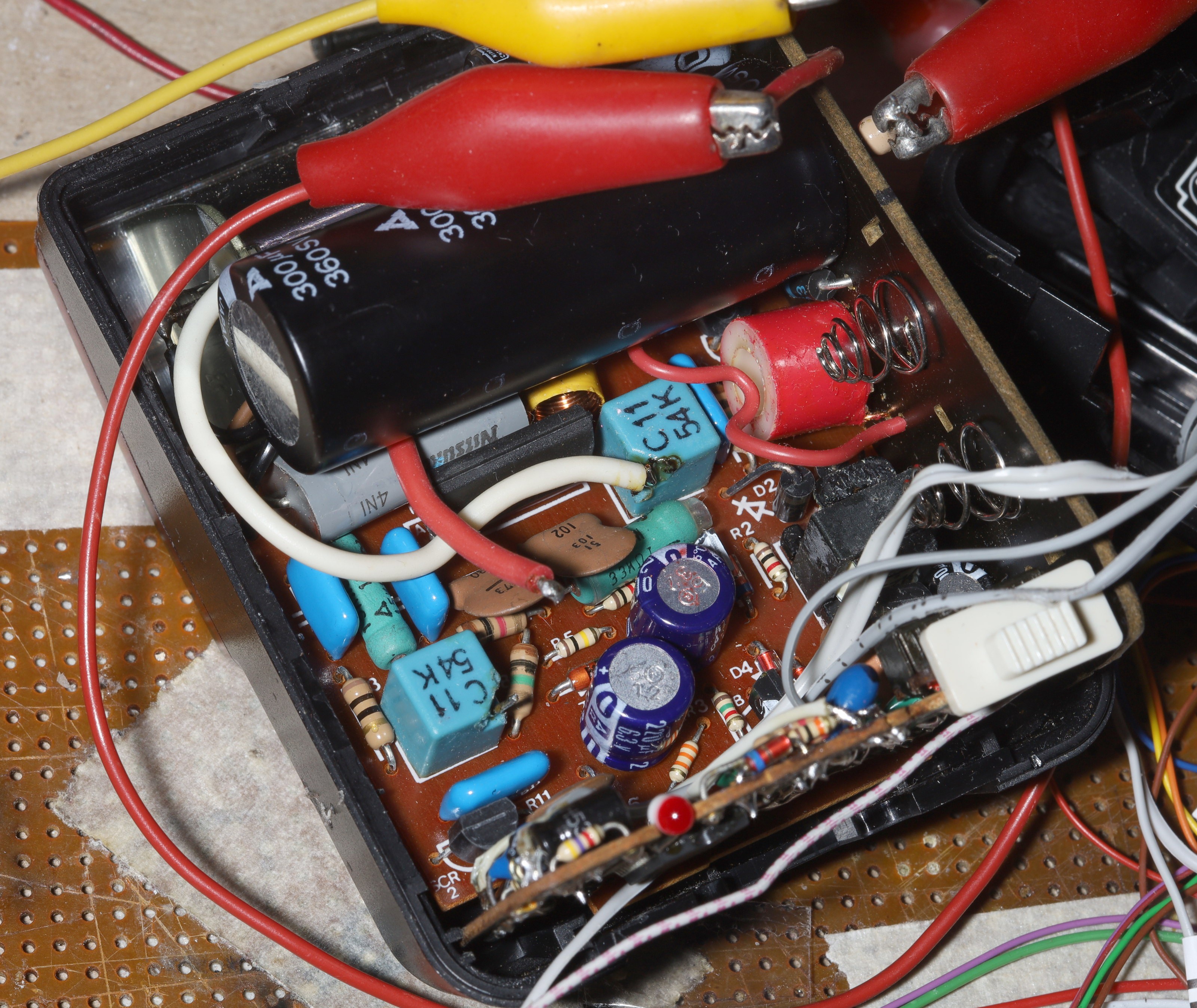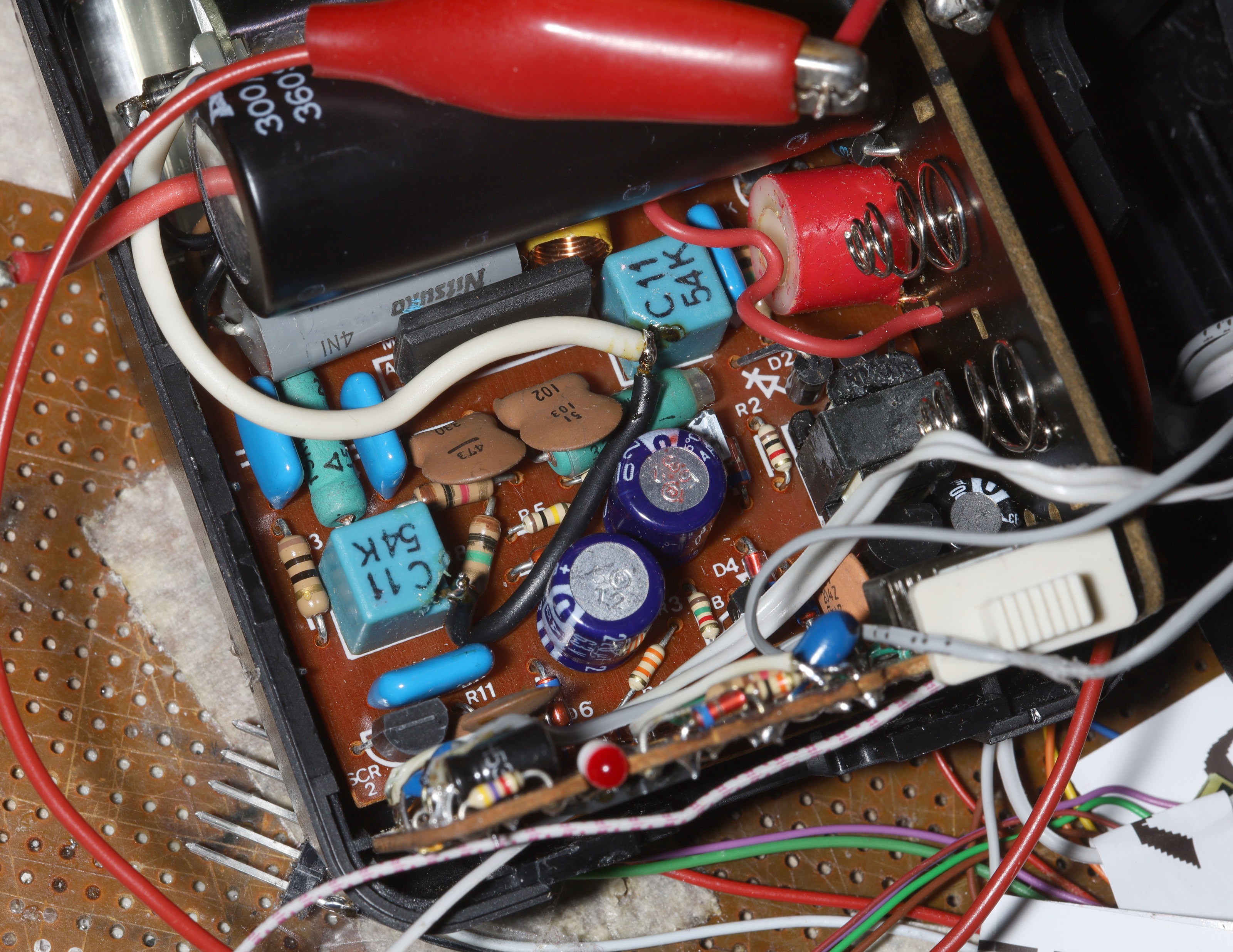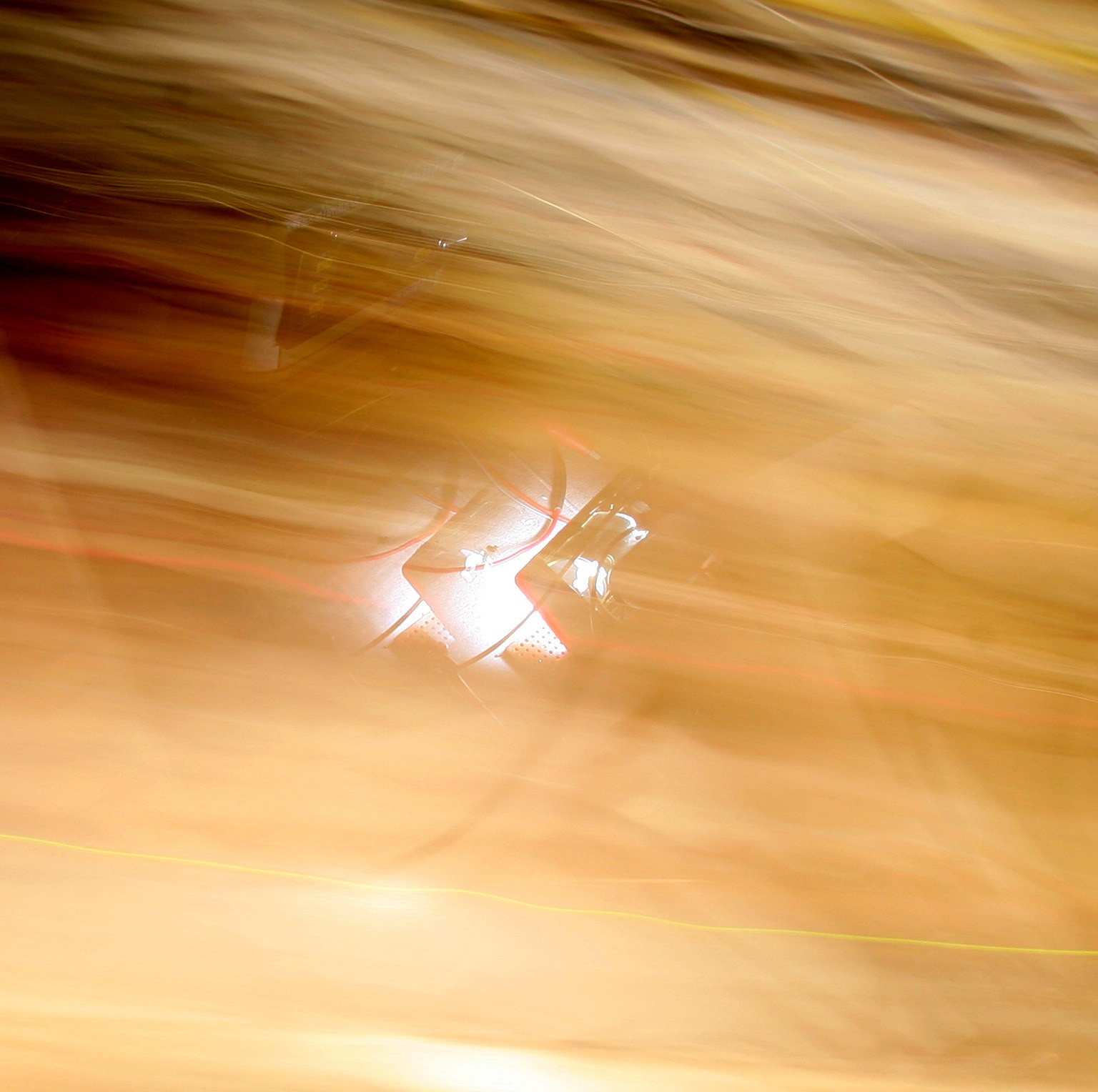It could recycle faster if the latency was in the SCR's & there were 2 of them connected to the flash tube. There are 2 SCR's. The 244T has an IR circuit for autofocus & a visible circuit for the exposure. They're CR02AM thyristors connected to C1154K's. C1154K's are transformers which boost the thyristor current to a very high voltage. The voltage is applied to the tube envelope to fire the flash.
SCR2 fires the mane flash & was previously labeled MANE STROBE. SCR1 is buried under the caps & fires the IR flash. It was previously buzzed out & labeled as FOCUS STROBE. Testing showed FOCUS STROBE & MANE STROBE could both fire the mane flash with controlled power if either transformer was connected to it. Unfortunately, if the 2 transformers were connected simultaneously, power was always maximum. There would have to be a way of connecting 1 at a time.

Mane flash (white wire) connected to IR flash transformer. IR flash (red wire) floating. Mane flash transformer floating.

Both transformers connected to mane flash. POWER LEVEL doesn't do the business anymore. The cathodes of both SCR's are connected to battery GND.
Another test showed if only SCR1 is connected, it recycles fast enough to support TTL. Noted the big green resistor for SCR1 was double the big green resistor for SCR2. Maybe that affects the recycling time. Maybe the difference in recycling time reflects a difference in cooldown periods for the tubes.
It can also fire full power the 2nd time & it has the same sync errors for shutter speeds above 1/200 so the timing is exactly the same as SCR2. The next step would be calibrating the power values for preflash & mane flash.

A long exposure caught SCR1 firing the preflash & the mane flash in time.
 lion mclionhead
lion mclionhead
Discussions
Become a Hackaday.io Member
Create an account to leave a comment. Already have an account? Log In.